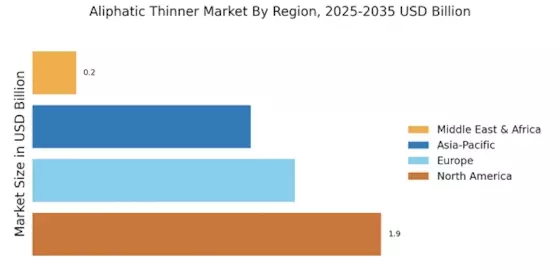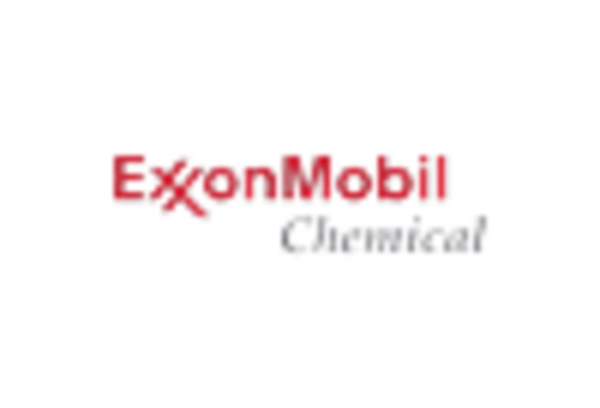Expansion of the Automotive Sector
The Aliphatic Thinner Market is significantly influenced by the expansion of the automotive sector. As vehicle production ramps up, the demand for high-performance coatings and finishes increases, necessitating the use of effective thinners. Aliphatic thinners are favored for their ability to enhance the application properties of automotive paints, ensuring a smooth finish and optimal drying times. The automotive industry is expected to witness a growth rate of around 3% annually, which bodes well for the Aliphatic Thinner Market. Additionally, the shift towards electric vehicles may further drive innovation in coatings, as manufacturers seek to develop lighter and more efficient materials, thereby increasing the reliance on specialized thinners.
Growth in the Construction Industry
The Aliphatic Thinner Market is poised for growth due to the ongoing expansion in the construction industry. With urbanization and infrastructure development on the rise, the demand for construction materials, including paints and coatings, is escalating. Aliphatic thinners play a crucial role in ensuring the proper application of these materials, enhancing their performance and durability. The construction sector is projected to grow at a rate of approximately 5% per year, which will likely bolster the Aliphatic Thinner Market. Furthermore, the increasing focus on sustainable building practices may lead to a shift towards thinners that are less harmful to the environment, prompting manufacturers to innovate their product offerings.
Rising Demand in Paint and Coatings
The Aliphatic Thinner Market experiences a notable surge in demand driven by the expanding paint and coatings sector. As construction and renovation activities increase, the need for high-quality paints that require effective thinning agents becomes paramount. Aliphatic thinners, known for their low toxicity and effective solvent properties, are preferred in various applications, including automotive and industrial coatings. The market for paints and coatings is projected to grow at a compound annual growth rate of approximately 4.5% over the next few years, which directly influences the Aliphatic Thinner Market. This growth is further supported by the rising consumer preference for eco-friendly and low-VOC products, prompting manufacturers to innovate and adapt their formulations to meet these demands.
Technological Innovations in Solvent Formulations
The Aliphatic Thinner Market is witnessing a transformation due to technological innovations in solvent formulations. Advances in chemical engineering and formulation science are enabling the development of more efficient and environmentally friendly thinners. These innovations not only improve the performance of aliphatic thinners but also align with the growing regulatory pressures for lower VOC emissions. As manufacturers strive to meet these regulations, the Aliphatic Thinner Market is likely to benefit from the introduction of new products that cater to both performance and environmental standards. This trend may lead to increased competition among manufacturers, driving further advancements in formulation technologies.
Increasing Awareness of Health and Safety Standards
The Aliphatic Thinner Market is significantly impacted by the increasing awareness of health and safety standards. As industries become more cognizant of the potential health risks associated with solvent exposure, there is a growing demand for safer alternatives. Aliphatic thinners, particularly those formulated with lower toxicity levels, are gaining traction as industries seek to comply with stringent regulations. The market is likely to see a shift towards products that not only meet performance criteria but also adhere to health and safety guidelines. This trend may drive innovation within the Aliphatic Thinner Market, as manufacturers focus on developing safer, more effective formulations that align with evolving regulatory landscapes.


















Leave a Comment